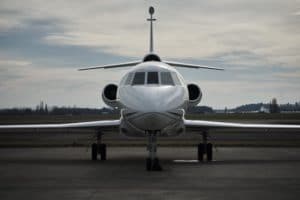
The development of CNC (Computer Numerical Control) machining helped to revolutionize aerospace design and engineering. The increased accuracy of CNC machining meant parts could be reliably produced to meet tight tolerances, allowing for more intricate designs and improving overall safety. Parts could also be produced faster and in larger quantities, lowering costs and increasing demand. But the greatest benefit of aerospace CNC machining is the ability to machine advanced engineering plastics.
The use of plastic parts in aerospace design has quadrupled in the last four decades. This is because the properties of advanced engineering plastics make them uniquely suited to aerospace applications.
They offer superior corrosion and chemical resistance – even when exposed to jet fuel and other harsh aircraft fluids – and can endure the high temperatures of engines without warping or failing. Plastic is also an efficient electrical insulator, protecting sensitive electronics and sensors from damage.
The combination of plastics and aerospace CNC machining also allows for tremendous flexibility in design, giving engineers the ability to create more complex and efficient parts. This can help to lower part counts, such as using integral clips and fasteners in the fuselage.
Clear plastics have replaced glass in traditional aircraft applications, due to the distinct advantages they offer. Transparent plastics offer greater impact-resistance than glass (a key safety factor), are lighter in weight, and can be fabricated into strong, clear, yet complex designs.
Aircrafts contain numerous bearings and shafts that require a high degree of surface lubricity but are difficult to lubricate due to their location. Self-lubricating plastics solve this problem, providing long part life with minimal maintenance. They can also handle higher load capacities than most traditional bearings and perform better in dirty and high-heat environments.
But the greatest impact advanced engineering plastics have had on aerospace design is in weight reduction. A plastic part can be 6 times lighter than the same part made from steel, and half as light as the same part made from aluminum. And with modern plastic composites, reducing weight doesn’t mean sacrificing strength. Today’s advanced engineering plastics can outperform many metals in strength-to-weight and strength-to-stiffness ratios. The resulting weight reductions to an aircraft translate to extended flight ranges, reduced emissions, and considerable fuel savings (an airplane saves $1,000 in fuel over its lifetime for every pound of weight reduced).
For over four decades Reading Plastic has been producing high-performance, precise aerospace parts that hold tight tolerances and meet all Aviation and Department of Defense Standards. If you need expert CNC machining for your aerospace parts, request a quote today by calling us at 610-926-3245 or emailing site2@readingplastic.com.